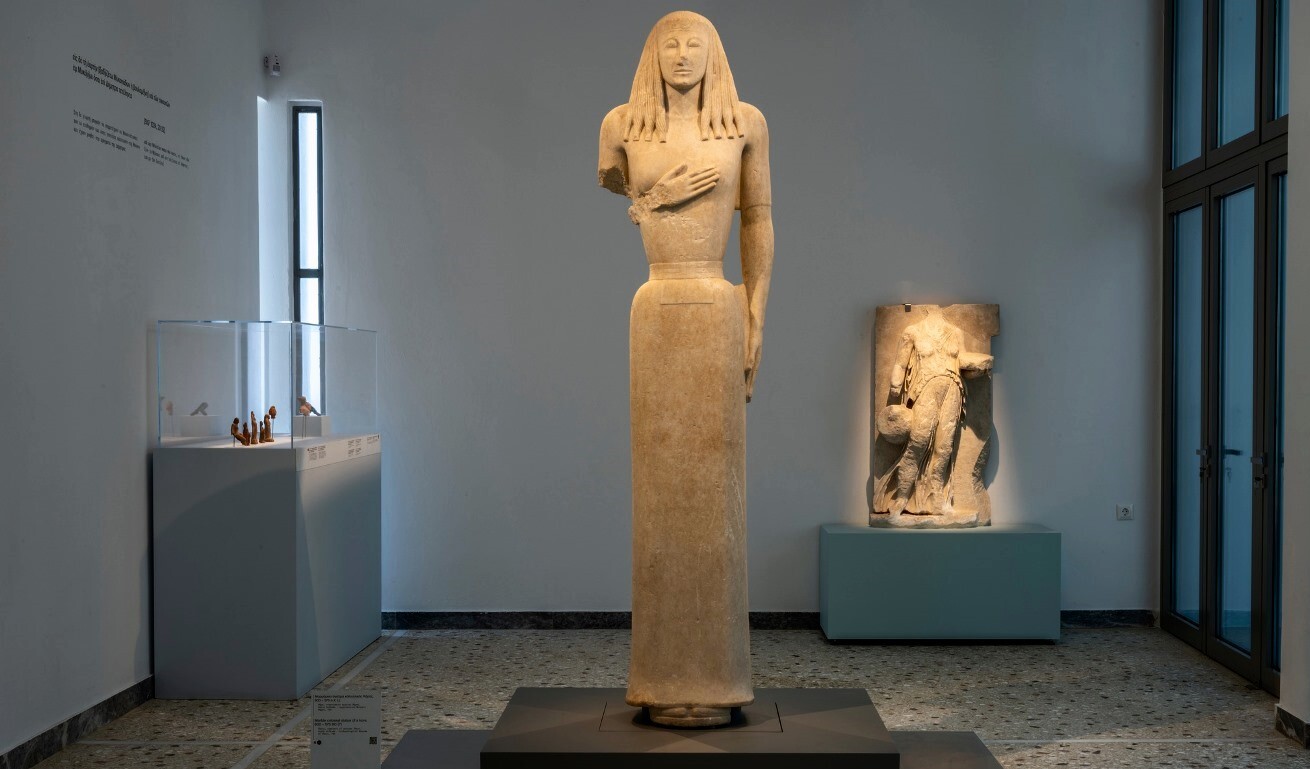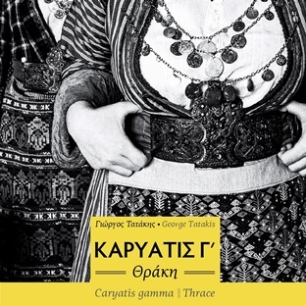EXHIBITIONS
ARCHAEOLOGICAL MUSEUM OF THERA / SANTORINI
Kykladitisses: Untold Stories of Women in the Cyclades
The Archaeological Museum of Thera, presents the exhibition “Kykladitisses: Untold stories of women in the Cyclades” until 30 November 2026. It’s the first pan-Cycladic exhibition ever organised, presents history through the eyes of the women of the Cyclades, from antiquity to the 19th century.
© Andreas Santrouzanos
The exhibition brings together 180 unique masterpieces from almost all the islands of the Cyclades: Amorgos, Andros, Delos, Thera, Ios, Kea, Kythnos, Melos, Mykonos, Naxos, Paros, Seriphos, Sikinos, Siphnos, Syros, Tenos and Pholegandros. The exhibits date from early prehistory to the birth of the Greek state. Unique works, most of which have never travelled either outside the Cyclades or outside the Museum of Cycladic Art; some have never before been presented to the public. Alongside the marble Cycladic figurines of the Early Cycladic period from the Museum of Cycladic Art, 135 exhibits from the collections of the Ephorate of Antiquities of Cyclades and artefacts from the Canellopoulos Museum, the Epigraphic Museum of Athens, the Ephorate of Paleoanthropology and Speleology and important private collections are on display.
The exhibition aims to examine the roles of women and their positions in insular societies, through smaller or larger “untold” stories that are told by the women themselves, either through their words or through their material remains, though almost always through the eyes of the men of their time. The exhibition thus brings to light unknown roles of women over time and how these roles were influenced by their insularity. Deities and mothers, priestesses, courtesans, merchants, fighters, intellectuals, mourners, witches, immigrants all take – all star in the show. The visitor will come to know the Cycladic women both in the public and private spheres, in social, political, religious, and family life.
Statuettes and large-sized sculptures, vases, jewellery, coins, funerary stelae, inscriptions with legal texts, frescoes, mosaics, engravings, manuscripts and icons – ranging from prehistoric to post-Byzantine times – compose the exhibition. From these exhibits, many of which could stand as individual objects of exhibition on their own, three works stand out due to their uniqueness and size: the colossal Kore of Thera (2.48 meters in height), one of the few nearly complete archaic statues; the emblematic fresco from Akrotiri on Santorini depicting the “Women in the Sanctuary,” a unique and monumental work (nearly 4 meters in length); and the Hellenistic statue of the Stag-hunting Artemis from Delos, which is being exhibited outside the island for the first time.
In the Santorini exhibition, the curators added to the eroticism section a statue of Aphrodite adjusting her sandal from the Archaeological Museum of Thera, while the burial monument of Parthenika from Thera has been placed in such a way that the installation and its grave goods are in direct visual contact with the original monument displayed in the museum’s atrium.
The exhibition is structured around the following 12 sections:
1. Juggling between genders
2. The origin of the world
3. Goddesses of the islands
4. Female apotropaic figures
5. In the sanctuaries
6. Goddesses of the sea
7. Female identities
8. From the Oikoumene to the Archipelago
9. Eroticism
10. Violence
11. Death through their own eyes
12. Faces
The importance of the “Kykladitisses” exhibition extends beyond the mere presentation of important artefacts, masterpieces or rare sources; it is a crucial effort to recognize the contribution of women to the social structure and cultural heritage of the Cyclades. Moreover, by highlighting these stories, a more comprehensive and inclusive understanding of the history of the islands is put forward, a history that does not ignore the crucial contribution of women.



